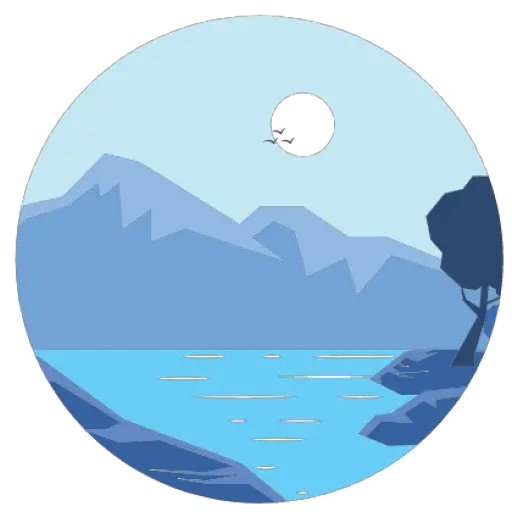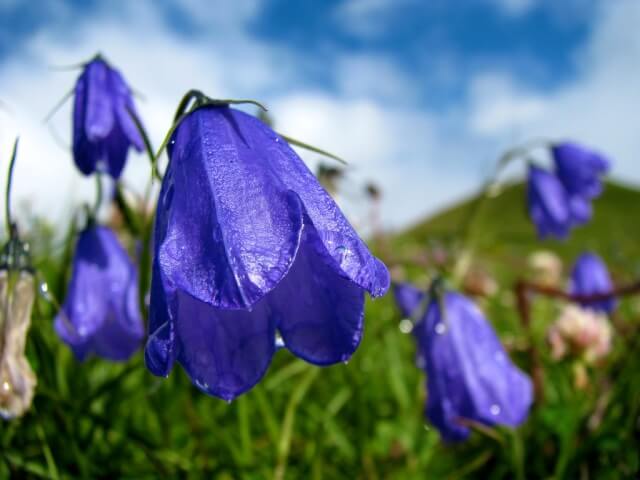Hardly the last patches of snow on the Italian Dolomites Seiser Alm are melted away, when the great flowering begins.
The grass still pale and straggly is transformed into a glimmering sea of purple hue by countless spring crocusses, and the violet tinted spring anemones, still wrapped in their silky little pelts, stretch in between already out towards the warming sun. Delicate snowdrops, primroses, and the pink flowering spring pasque flowers (Pulsatilla vernalis) mix into this blossom dance. When the sun rises higher, the sulfur pasque flowers (Pulsatilla sulphurea) can hardly wait their turn, they desire to be still more beautiful, more impressive, and push their stalks up high. In between the azure blue of the gentians, and the rose-red of the deliciously scented stone roses are seen. Then also the meadow grasses begin to sprout, magnificent alpine carnetias, prunellas (Lippenblütler!), interspersed with wild orchids in the most incredible hues, especially the beautiful black orchid (Nigritella nigra), arnica, spring gentians, golden primroses, lilies of the valley, bellflowers, fire-, paradise-, and grass-lilies, flowers of the daisy family (Compositae) and the mint family (Labiatae) in manyfold colour variants, globe flowers and, and, and … a paradise of wildflowers, as hardly found a second time in this world, a single rejoicing in colour.
But also on the rocky slopes of the surrounding Dolomite Mountains the plants awaken to new life from their hibernation and begin to bloom. A special adornment of the dolomitic rocks is the erect, up to one square-yard in diameter large silver patches of the alpine “Fingerkraut” (Potentilla nitida) with their delicate pink blossoms. Also the blue-green Saxifraga braves the rough climate of the high mountains in the company of the edelweiss, “Edelraute”, and germander speedwell. Alpine poppy, “Gemskresse”, “Leimkräuter” (alpine Silene species) and “Mieren” (alpine Minuartia species) bring the bare surrounding boulders to life. The alpine aster, the “schopfige Teufelskralle” (Physoplexis comosa), and the tender alpine columbine species (Aquilegia) are as well adornment pieces of the rocky slopes. Until late into autumn the tender small, pink flowering thrift (Armeria alpina), also called the “Schlern-witch” because of its shaggy fruit stand, enjoy the eye of the hiker as well. Even a yard long list of plants could never convey the impression of this flower grandeur. One has to see them with the own eyes. Therefore the months of June and July are the special months of delight for friends of flowers, in which they can enjoy to their hearts desire the richness and beauty of the Seiser Alm.
That much is known today, that the unusual richness of the flora of Schlern is caused by a number of factors. Different types of rock, of vulcanic as well as of sedimentary origin, defintitely result in different floral communities. In addition, the central alpine location causes a continental climate with a relatively low precipitation. This in turn explains why Schlern presents an unparalled botanical border area. Many Mediterranean plants thus find here their Northern border, Northern plants their Southern border, and also the plants typical for the East- and West-Alps meet each other around Schlern. Some plant species could therefore survive at special sunny slopes inhospital millenia. Up to a thousand years ago the Seiser Alm was covered by dense forests. Then the Bavarians came and opened up vast grazing land for their cattle herds through clearing by fire. The aforementioned diverse soil composition, the extensive cattle farming, the alternation between sunny-dry limestone places and bogs which are sealed by clay, as well as the rich water ways in the small valleys, they alltogether created straightway a variety of ecological niches.

